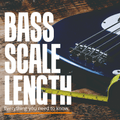HOW TO SETUP YOUR GUITAR FOR SLIDE. THE DEFINITIVE BEGINNER'S GUIDE.
By Strings Direct – 29 August, 2023

In previous articles, I have looked at some of the key elements that you need to consider if you want to start playing slide. Specifically, I have covered the following topics:
- A Beginner’s Guide To Guitar Slides
- Guitar Slides Of The Blues Greats
- A Beginner’s Guide To Slide Guitar Tunings
In those articles I run through the various different guitar slides out there, and some of the most common open tunings that you will encounter when playing slide. I also cover the slides used by a range of iconic blues slide guitarists, to help give you inspiration when trying to decide which slide is right for you.
There is however, one more significant topic that is worth discussing to help you on your slide playing journey. And that is how to set your guitar up to play slide.
As I will explain in detail throughout this article, there are a number of considerations you have to take into account when playing slide. And these can have an impact on how you set your guitar up. So here I will run through some of the key elements that you might want to adjust to maximise your success playing slide - especially when you are first getting started.
In my opinion, the easiest way to do this is to compare the setup of a guitar intended for ‘normal’ playing and slide playing and run through why these differences exist.
So with that in mind, let’s get into it! Here are some elements you might want to consider if you are getting started playing slide:

WHAT IS 'ACTION'?
Action refers to the distance between the fretboard and the strings on your guitar. Guitarists that play ‘normal’ guitar, tend to opt for an action that could be considered low or moderate.
A low action makes it easier to fret notes. This is because you don’t have to press each string very far for notes to sound. As a result, guitarists who like to play fast often play with a low action. They don’t have to exert a lot of pressure to play each note. And as a result they preserve energy and can move onto the next note more quickly and easily.
Lowering the action significantly however, can prove problematic. If you drop your action too low it will result in fret buzz and notes choking out, as your strings will have no room to vibrate.
On the other side of the spectrum, a high action makes playing more challenging, as you have to exert more pressure to fret each note. The benefit of a higher action however, is that it can improve your tone. The strings have more room to vibrate, and this typically results in greater sustain and a more resonant tone.
To strike a balance between playability and tone, guitarists will often adopt a moderate action. This allows them to fret each note easily, whilst avoiding fret buzz and creating a more resonant tone.

SETTING ACTION FOR SLIDE GUITAR
Adopting a low or moderate action for slide guitar is challenging for most players, and especially for those earlier in their playing journey. When you play slide you move laterally over the frets. And whilst you are unlikely to be thinking about exerting downward force on the string (as when you fret a note) the slide that you use will be pressing down on the string.
The extent to which this happens will depend partly on your ability to alter the pressure with your slide hand and to play with a light touch. It will however also depend on the type of slide you are using and the weight of that slide. I discussed these points in more detail in this article here. In short though, a heavy metal slide will exert more downward pressure on the string than a light glass one.
This pressure is necessary for the strings to make sound. However, too much pressure will result in the slide rattling against the frets as you slide up and down the fretboard. Effective slide playing relies on you gliding over the frets smoothly and seamlessly. And so as a result, many slide guitarists raise their action to avoid this unwanted contact with the frets.
This allows them to move freely up and down each string, without worrying about having to play with a very light touch. The added benefit of this approach is that it also results in greater sustain and a more resonant sound. And both of these are key elements of effective slide playing.
As a brief side note - it is worth mentioning that if you make significant changes to your action, you might also need to raise the height of your pickups. If your pickups are very far away from your strings, the magnetic field is not optimised. And this can result in a thin and weak tone. So if you do raise your action a lot, then I would recommend potentially raising your pickup heights too.
There are no hard and fast rules here. And so the specific pickup height you set will depend on the guitar you use, how high you set your action, and what kind of tone resonates with you. We all have a different idea of what constitutes a pleasing guitar tone, and so it is worth experimenting until you find a tone that works well for you.

WHAT IS STRING GAUGE?
Similar differences occur between ‘normal’ guitarists and slide guitarists when we look at string gauge.
When you play ‘normal’ guitar, you make music by pushing the strings down onto the frets. That is the key action that allows you to play, and it is of fundamental importance.
As such, the crucial element you need to maintain when playing in this style is your ability to fret notes. Beyond that, it is also important that you can move across the guitar freely and execute ideas like bends, vibrato and slides without great difficulty.
As I noted in more detail in this article here - lighter gauge guitar strings are easier to play than heavy gauge strings. And that is why guitarists will typically use strings with a light or moderate gauge that falls anywhere between .008 and .011.
There are of course players who go lighter or heavier than this - but that range is fairly typical. This is because it allows guitarists to play and execute techniques like slides, bends and vibrato with relative ease.

CHOOSING THE CORRECT STRING GAUGE FOR SLIDE GUITAR
When you are playing slide, you do not have this concern. You do not need to fret notes and instead are focused on lateral movement. And in fact, opting for very light gauge strings will make this challenging.
This is because the slide that you are using exerts downward pressure onto the strings. There is more tension across heavier gauge strings, and as such they better withstand this pressure. They remain taut, and this maintains a certain amount of space between the strings and your slide.
Light gauge strings will not withstand the pressure of the slide in the same way. And this causes the string to move down towards the fretboard. Depending on the gauge of your strings, the weight of the slide you are using, and your ability to release pressure with your sliding hand, this could very likely result in your slide rattling against your frets.
This likelihood increases if you use a ‘slack’ tuning like open G or open D. These involve tuning your strings down, and this reduces the tension across the strings.
As a result of this - and also for a variety of tonal reasons noted below - slide guitarists typically play with heavier strings. This varies between players, but slide virtuoso Sonny Landreth uses strings that run from .013 to .056. And modern slide player Joey Landreth (who is no relation to Sonny) plays a gauge that runs from .019-.064!
Joey Landreth does also tune down to open C - which greatly reduces the tension across his strings. However as noted in this article here, this still equates roughly to the tension of a set of .013 strings in standard tuning.
In short, slide guitarists typically use heavier gauge strings. For many players, this is from a technical standpoint. However it also does a lot to improve tone. Heavy gauge strings increase sustain and give these players a full and resonant tone. And this allows them to hit the long, singing notes that sound so beautiful when played by slide guitarists.
Whilst I suspect that both Joey and Sonny Landreth use heavy strings for tonal and tuning reasons - this approach is very helpful from a technical standpoint for players earlier in their slide playing journey. It means that they do not have to play with such a soft touch. Instead they can focus on playing in a potentially new open tuning, and on elements like their note choice and vibrato technique.
So if you are earlier in your slide guitar playing journey, consider using heavier gauge strings. Not only will it make it easier to play slide - you will also enjoy the added benefits of increased sustain and resonance - both of which are improved when you use very heavy gauge guitar strings.

STRIKING THE BALANCE
Using heavy gauge strings and raising the action on your guitar will make playing slide easier. Your slide will be able to glide across the strings seamlessly without rattling against the frets. Not only this, but you will create a beautiful, resonant tone with great sustain.
However both of these elements make fretting notes and playing chords more challenging. As such, I would recommend taking a pragmatic approach to your guitar setup - depending on your personal playing context.
For example, if you are only playing slide, then you can take a more aggressive approach to your setup. You can use heavy gauge strings, and set your guitar with a high action. In this way you can play slide without any fear of the slide rattling against the strings. You will also enjoy the tonal benefits of heavy gauge strings and a high action.
Conversely, if you are playing a mix of slide and ‘normal’ playing, then I would recommend working to strike a balance. And here I would advise experimenting with both string gauge and your action until you find a sweet spot where you can play comfortably both with and without a slide.
It is worth noting that this sweet spot will depend on the slide you are using and the tuning in which you are playing. If you use a heavy metal slide, you will have to use heavier strings and potentially raise your action higher, than if you are using a light glass slide. And similarly, if you are using a ‘slack tuning’ like open D or open G - you will also need to use heavier gauge strings to maintain tension across your strings.
For this reason, many slide guitar players - especially when starting out - will adopt a two guitar setup. They will use one guitar for their ‘normal’ playing, and another for their slide playing. This saves them from having to make any compromises - regardless of the style in which they are playing. They can set one guitar up to work well for normal playing - with lighter strings and a low or moderate action. And with their guitar dedicated to slide, they can make more aggressive changes to their setup to make the process of playing slide easier.

CLOSING THOUGHTS
The ideas outlined here are suggestions. If you are new to the world of playing slide, then adopting a higher action and using heavier gauge strings will make learning and playing slide easier.
However, you might find that you can play slide without making any changes to your current setup. This is particularly likely to be the case if you already have a higher action and use strings on the heavier side of the spectrum.
You might also find that you can adapt your approach with time. In the beginning of your slide playing journey, you might have to make more aggressive changes to your setup to avoid rattling your slide against the frets. As you become better able to control the pressure with your sliding hand however, you might find that you can then adjust your setup.
Whilst I can’t speak for how his slide setup has changed over the years, Derek Trucks’ current slide setup is not very different at all from a ‘normal’ guitar setup. Trucks plays a custom made set of DR Pure Blues strings in a .011-.046 gauge and uses the lowest action possible on his Gibson SG, whilst still being able to play slide.
Trucks’ slide guitar hero Duane Allman took a similar approach - actually using a set of strings running from .010-.038. These are a moderate gauge on the treble strings and surprisingly light on the bass strings. That Allman was able to create a range of fiery blues licks with such a light gauge of strings is testament to his skill as a slide player. However it helps to illustrate that you can use a more conventional setup and still achieve great results as a slide player - even if it takes some time to develop your technique.
So, keep these points in mind and experiment with the setup of your guitar(s). See how you get on, and continue to tweak and adjust over time, to ensure that your setup is best suited to your playing style and skill level. Good luck!

* * * * *
ABOUT THE AUTHOR






